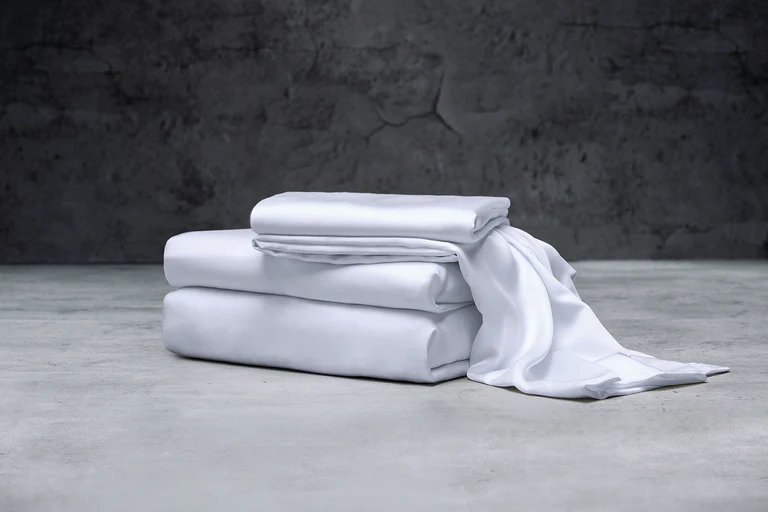Bambusfaser und Lyozellfasern sind beide hervorragende Materialien auf dem Gebiet der Fasern, Sie unterscheiden sich jedoch in Bezug auf ihre Quellen signifikant, Produktionsprozesse, Eigenschaften, und Anwendungen.
Bambusfaser wird aus natürlich angebauten Bambus extrahiert und gilt als die fünftgrößte Naturfaser nach Baumwolle, Leinen, Wolle, und Seide. Es wird in zwei Kategorien eingeteilt: natürliche Bambusfaser und chemische Bambusfaser. Bambusfasern verfügen über eine hervorragende Atmungsaktivität, sofortige Wasseraufnahme, Abriebfestigkeit, und gute Färbbarkeit. Zusätzlich, es hat natürliche antibakterielle Eigenschaften, antimykotisch, Milbenresistent, geruchsresistent, und UV-beständige Eigenschaften, Dies verschafft ihr den Ruf, eine wirklich umweltfreundliche grüne Faser zu sein.
Lyocellfaser, auch Rayon genannt, ist eine synthetische Faser, die durch einen chemischen Prozess unter Verwendung von Zellulose hergestellt wird (wie zum Beispiel aus Bambus gewonnenes Fruchtfleisch, Holz, und andere Pflanzen) als Rohstoff. Es gilt als das wertvollste Produkt in der Geschichte der Chemiefasern im letzten halben Jahrhundert. Lyocell-Faser bietet nicht nur Komfort, guter Griff, und die einfache Färbbarkeit von Naturfasern wie Baumwolle, sondern besitzt auch Umweltvorteile, die herkömmlichen Viskosefasern fehlen. Bei der Herstellung von Viskosefasern werden schädliche Gase freigesetzt, wohingegen die Herstellung von Lyocell-Fasern keine chemischen Reaktionen erfordert, verwendet ungiftige Lösungsmittel, und erholt sich bis zu 99.7% der Lösungsmittel, macht es energieeffizient, umweltfreundlich, und nachhaltig.
In Bezug auf Eigenschaften, Bambusfasern zeichnen sich durch hervorragende Atmungsaktivität und antibakterielle Eigenschaften aus. Seine innere ultrafeine Porenstruktur verleiht ihm eine starke Adsorptionsfähigkeit, Dadurch kann es Schadstoffe aus der Luft absorbieren und unangenehme Gerüche beseitigen. Auf der anderen Seite, Lyocellfasern sind für ihre Weichheit bekannt, angenehmes Tragegefühl, und Hochglanz. Kleidung aus Lyocell-Fasern weist nicht nur natürlichen Glanz auf, glatter Griff, hohe Festigkeit, und minimale Schrumpfung, sondern auch eine hervorragende Feuchtigkeitsdurchlässigkeit und Atmungsaktivität.
In Bezug auf Anwendungen, Beide können zur Herstellung von Kleidung und Heimtextilien verwendet werden. Jedoch, aufgrund ihrer unterschiedlichen Leistungsmerkmale, Sie können spezifische Anwendungsszenarien haben. Zum Beispiel, Die antibakteriellen und Adsorptionseigenschaften der Bambusfaser machen sie möglicherweise besser für die Herstellung von Heimtextilien geeignet, die antibakterielle und Adsorptionsfunktionen erfordern, wie Handtücher und Bettwäsche. Auf der anderen Seite, Die Weichheit und der Glanz der Lyocell-Faser eignen sich möglicherweise besser für die Herstellung hochwertiger Mode- oder Wohndekorationsartikel.
Gesamt, Bambusfasern und Lyocellfasern haben jeweils ihre einzigartigen Vorteile und geeigneten Anwendungen. Bei der Wahl zwischen ihnen, Es ist wichtig, spezifische Bedürfnisse und beabsichtigte Nutzungsszenarien zu berücksichtigen.
